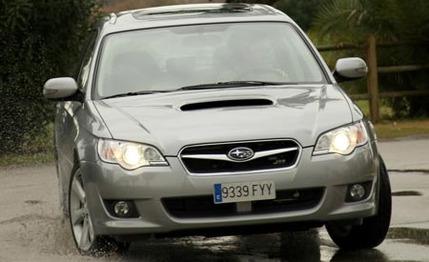
 First Drive Review
First Drive Review
To Subaru, it makes all the sense in the world. The automaker's core technology is a horizontally opposed boxer engine and symmetrical all-wheel-drive system, and this unique drivetrain layout has made Subaru distinct for 43 years.
Recognizing sales would never grow substantially in Europe without a diesel engine, Subaru faced an interesting challenge: Could it radically reinforce its existing engine architecture for diesel duty without making it too large or heavy to fit in a car?
Fuji Heavy Industries (maker of Subaru) engineers knew it would be no small feat to pull off this world first. The Subaru engineers admit they initially feared the challenge would be too great.
Hirofumi Senoo, Fuji general manager of the Subaru Test and Development Center in Europe, says they started with a layout similar to that of the 2.0-liter, four-cylinder gasoline boxer engine (two heads, two blocks) and relied on computer-aided design to map different possible configurations for a 2.0-liter diesel. The blocks are unchanged, but virtually every aspect of the engine structure, as well as the fuel-injection system, had to be reinforced to withstand the higher forces of diesel compression.
Trial and Error Pays Off
After much trial and error, the final result is tantamount to an all-new engine, Senoo says. The new crankshaft is shorter and more rigid. The stroke was extended by 0.4 inch with unique connecting rods, and the bore dimensions decreased by 0.2 inch. The bore pitch also was shortened, much as it was in recent changes to Subaru's six-cylinder boxer gasoline engine, and in both cases, slits between the cylinder bores allow each cylinder to be individually cooled.
Airflow benefits from putting the turbocharger under the engine and mounting it directly to the catalytic converters.